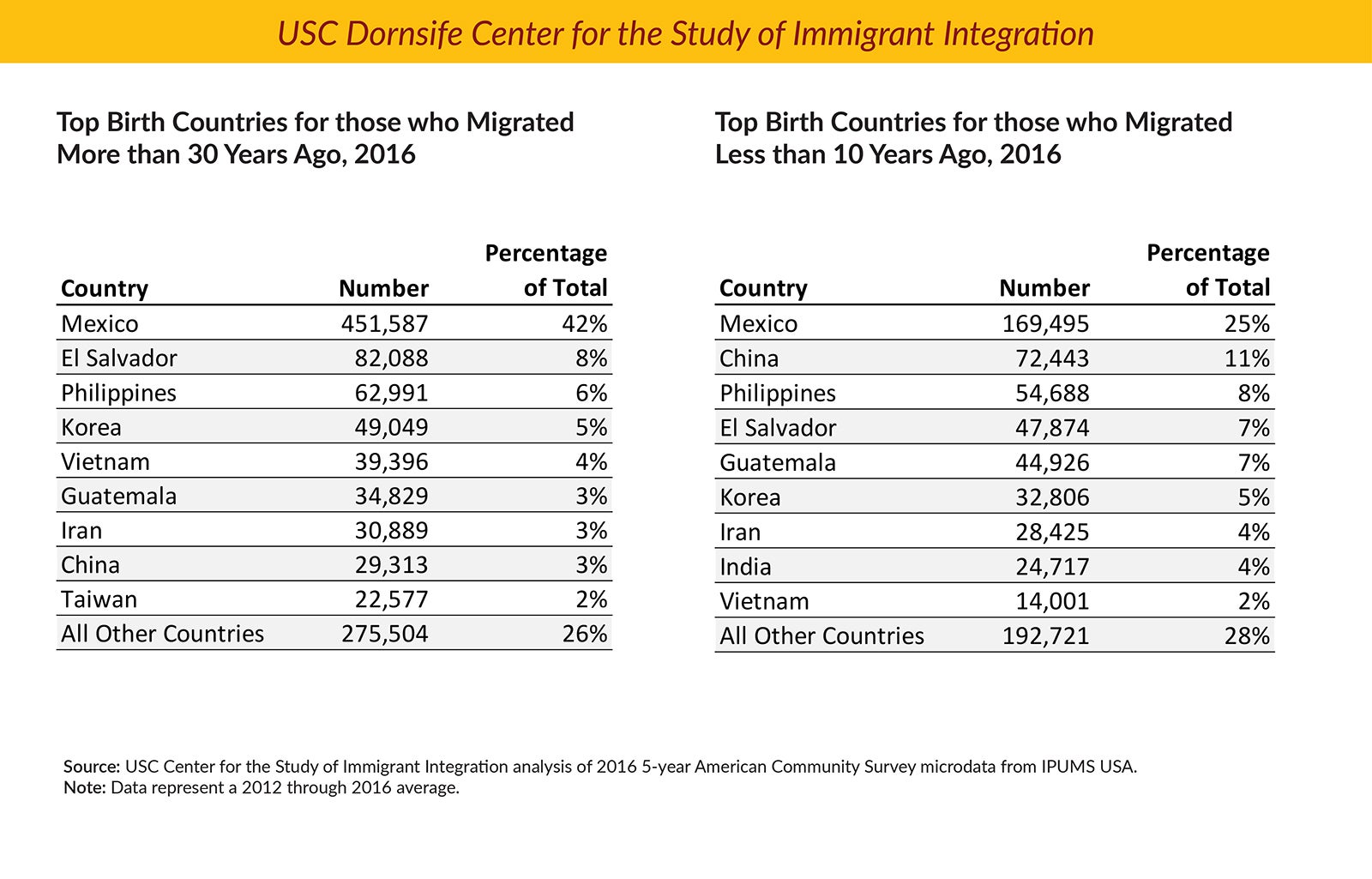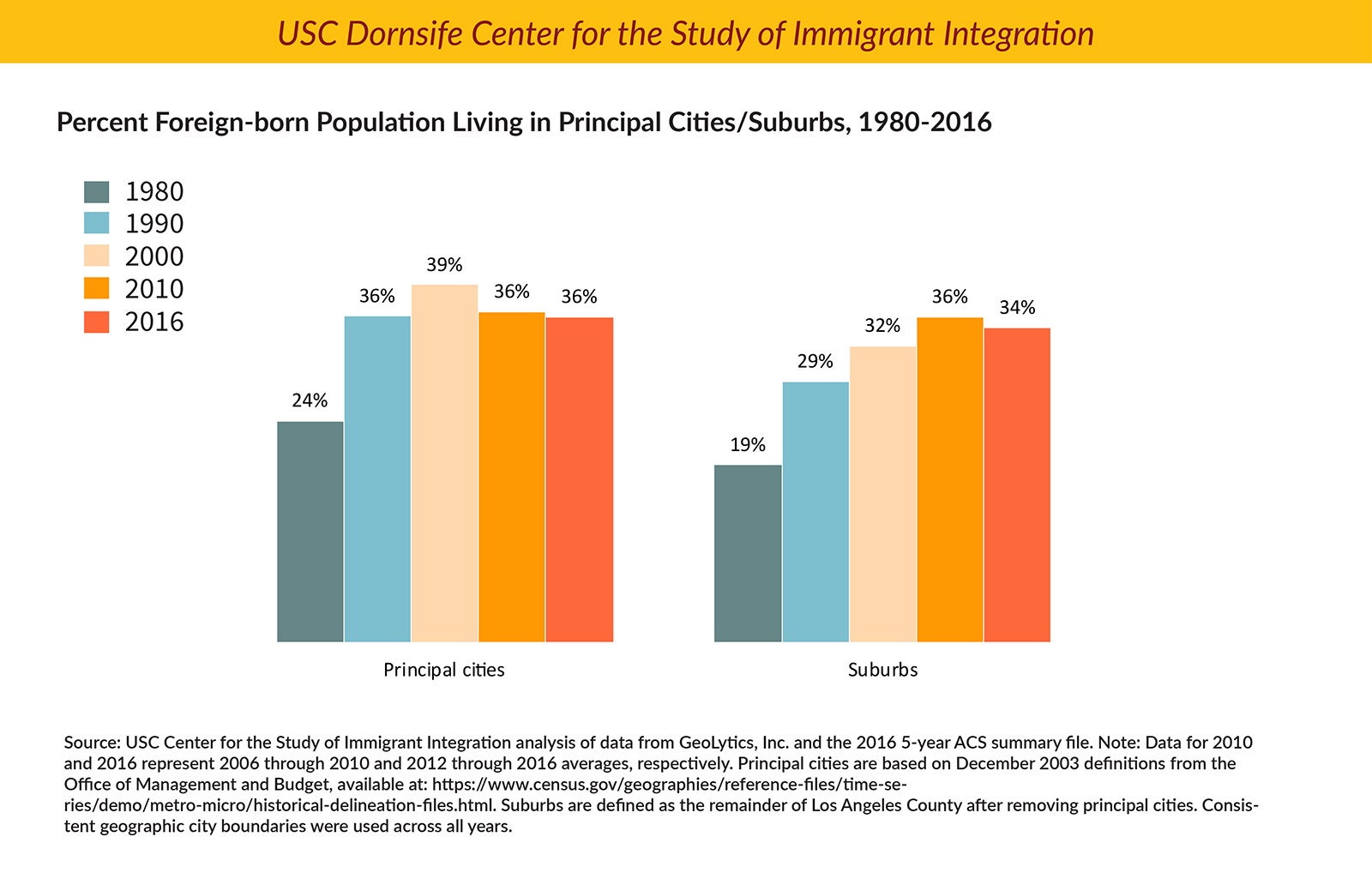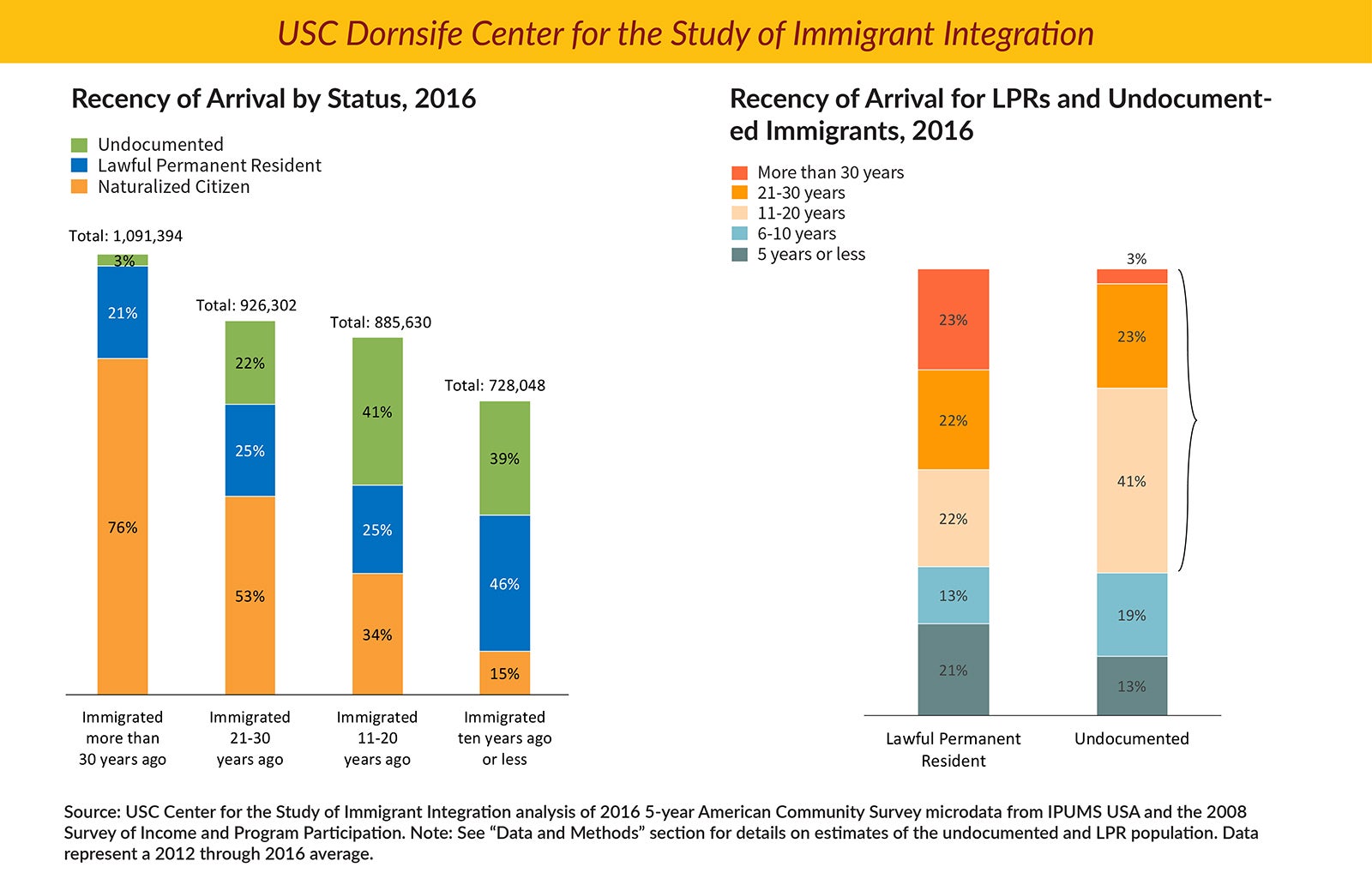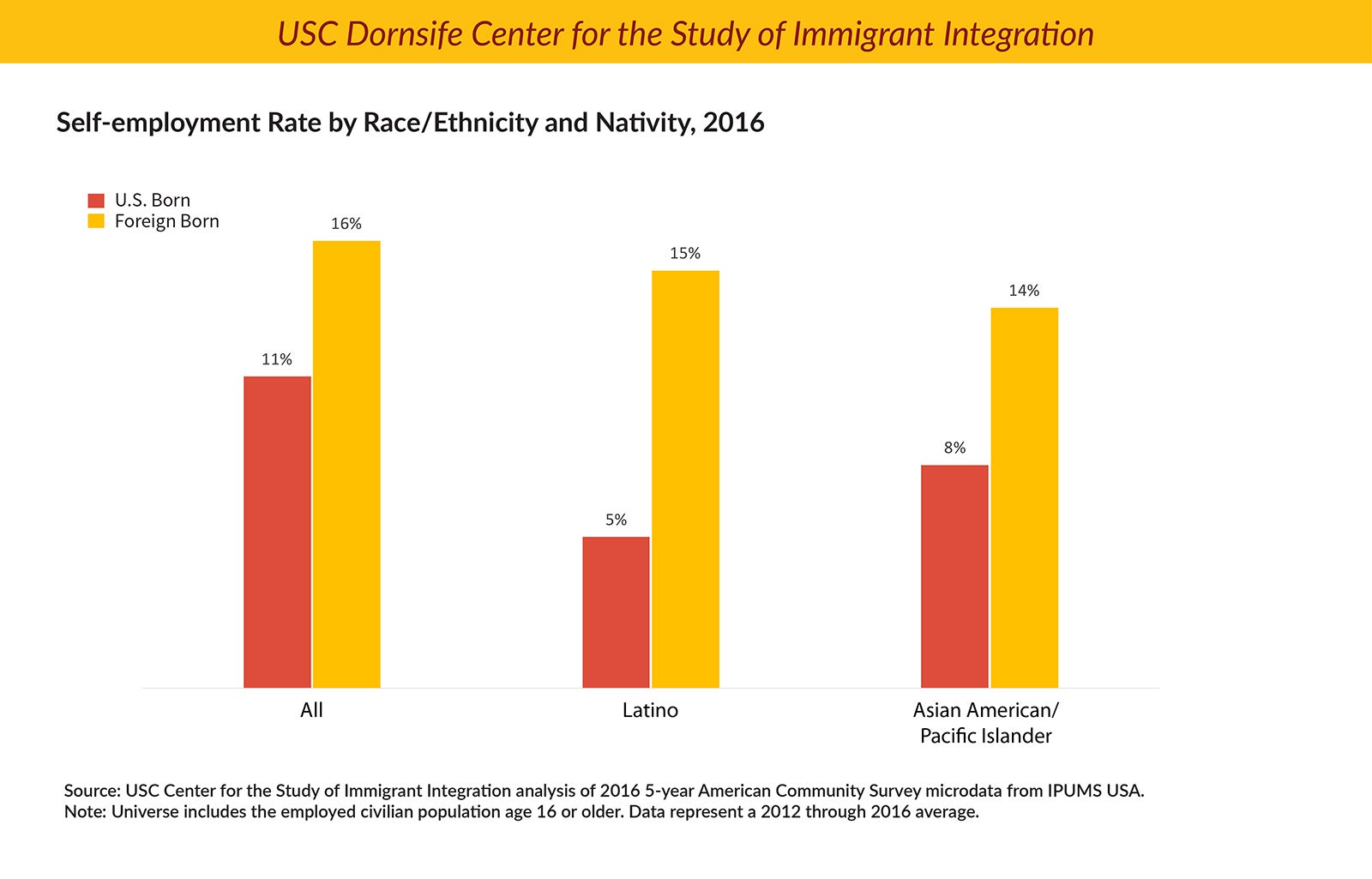
5 things you may not know about immigrants in Los Angeles County
A new study released by the Center for the Study of Immigrant Integration at USC Dornsife College of Letters, Arts and Sciences brings fresh insight into the immigrant communities of Los Angeles County. With immigrants making up 35% of the population, a broad and rich understanding of this group is essential to developing policies and laws that support their success.
Here are five findings from the report and how they can guide policy in the future.
Immigrants are headed to the suburbs
In 1980, only 19% of the population in suburban areas was foreign-born. Now, it’s 34% of the suburban population. Areas like Arcadia, Temple City and Walnut, all outside the denser urban areas of the city of L.A., rank in the top 10 cities for the largest increase in immigrant population since 1980.
This might have something to do with L.A.’s affordable housing crisis. The majority of the city’s immigrants are paying more than 30% of their income for rent or a mortgage. As housing costs rise in inner cities, more and more immigrants may head to those suburban neighborhoods, which offer cheaper rent.
With this knowledge, the county should adopt region-wide thinking and offer grants and support to smaller communities as they take in more immigrants.
Nearly 70% of undocumented immigrants have lived in L.A. for at least a decade
Of the 900,000 undocumented Angelenos, most have been here more than 10 years. These undocumented immigrants often live in “mixed-status” households, where some family members are citizens and others not.
Fear of deportation can negatively affect the whole family unit. They may resist using public services like health clinics or transportation to avoid notice by immigration officials. Focusing on reducing these barriers to services and making naturalization more affordable, can help reduce the strain on these families.
Chinese immigration is on the rise, while immigration from Mexico has slowed
 Immigration from China has shown the largest increase in the past 30 years. Of immigrants that arrived in the last 10 years, 11% are from China, up from 3% of immigrants more than 30 years ago.
Immigration from China has shown the largest increase in the past 30 years. Of immigrants that arrived in the last 10 years, 11% are from China, up from 3% of immigrants more than 30 years ago.
Meanwhile, Mexican immigration has declined considerably. Only a quarter of immigrants in the past 10 years arrived from Mexico, compared to 42% three decades ago.
A full and complete 2020 Census count can help us better understand origin nationalities of immigrants, so that services can be tailored linguistically and culturally.
Children of immigrants represent the majority of those newly eligible to vote in 2020
This year, 120,000 youth in L.A. County will become eligible to vote for the first time. Of that group, 60% have at least one immigrant parent.
For politicians looking to attract younger voters, focusing on issues that affect immigrants may be one pathway to success.
Entrepreneurship is more prevalent in immigrant communities
Foreign-born workers are more likely than U.S.-born workers to be self-employed. Close to 16% of immigrants immigrant workers are self-employed, versus 11% of those born in the U.S. This may be due in part to exclusion from other forms of employment because of discrimination or a language-barrier.
Adopting laws like SB 1159, which allows undocumented immigrants to get professional licenses for businesses like bookkeeping, and improving access to government contracts for small businesses, many of which are owned by immigrants, can help these entrepreneurs flourish.



